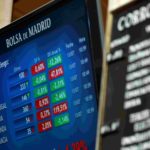The value of stock
Deciding on what stock to buy is far from easy. Large investors rely on advisors and experts to manage their portfolios. However, non-professional investors have to rely instead on their intuition. Aside from trends and past performance, there are various stock market metrics that allow us to analyze whether or not it’s a good time to buy a stock, based on its price.

By price, we mean the amount of money a buyer is willing to pay for an asset, although in the stock market world it is not always easy to determine this price. However, in the stock market, as in all disciplines, there are a series of “formulas” we can use to gauge whether a security is expensive or cheap. More precisely, there are various online resources that investors can use to do a better job at trading them in the markets.
PER
The PER, short for Price-Earnings Ratio, is the go-to indicator in the stock market world. It relates the price at which a share is traded to the earnings generated by that company; it is a simple division of the share price and net earnings by the number of shares in that company.
There is an awful lot of stock market jargon when it comes to trading and the like. Here are some of the terms you should know about if you want to start trading.
This calculation gives a number showing the number of years needed to recoup the investment, factoring in the return it will generate. So, the higher the PER, the more investors are paying to earn their return, while the lower the better.
A PER between 0 and 10 is generally considered low, indicating that the stock is undervalued. Between 10 and 17 is the standard range for most companies, while between 17 and 25 implies that the stock is slightly overvalued. Values above 25 indicate that the stock is more heavily overvalued.
Book value
This variable is not as well known as the PER, but it lets us know what the “real” value of a company is. As the name implies, the book value of a share takes into account how much the assets of that company are worth, based on its actual accounts or books. And we don’t just mean its assets, but rather the value of its assets less its liabilities divided by the total number of shares outstanding.
In simpler terms, this means adding up all the company’s assets (buildings, machinery and patents, etc.) and then subtracting its debts. The result would be the book value, which, once divided by the number of shares, tells us what the “real” price is. If it is above the market price, it means that you are buying a share whose intrinsic value is higher. Conversely, if it is below the quoted price, it means that you would be paying extra to acquire the stock.
This variable compared to its market price is known as the price to book (P/B) ratio, the multiple of which indicates how many times the book value (equity value) of the company is trading for on the stock market.
Dividend yield
Dividend yield is another of the most commonly used variables for comparing a stock’s price and is an absolute must for small investors. This percentage compares the expected dividend per share with the share price. The higher the better, simply put.
Broadly speaking, companies offering a higher dividend yield are a better buy, as the investor will receive more of the profit in the form of dividends. Investors seeking regular dividends payments should keep a close eye on this variable.
In addition to a high dividend yield, investors who want to receive a recurring dividend should pay attention to two other key aspects: whether the shares come from large companies and whether they run a regular business, with regular earnings.
Payout
The payout is not in itself a stock market ratio, though it does allow investors to know how much of the profit the company is willing to distribute among its shareholders. Listed companies can essentially do two things with their profits:
- Retain them (using it to grow or perhaps for further research)
- Pay them out to shareholders
For those companies that choose to distribute their earnings among shareholders, it is important to look closely at the percentage they are willing to fork out. This is known as a payout. For instance, if a CEO announces a 20 percent payout, it means that 20 percent of that year’s profit will be distributed among shareholders; if it were 50 percent, it would mean paying out half of the profits.
Earnings per share
Earnings per share, or EPS for short, is a widely used variable, as it looks at the profit generated by a company divided by the number of shares. The calculation couldn't be easier: simply divide the profit for a given quarter or year by the number of shares at that time. The higher it is, the more profit the company is able to generate per share. Of course, this should be put into proper context.
We also have estimated earnings per share, which instead of looking at the company’s actual profit, fixates instead on the profit expectations of the company divided by the number of shares.
Target price
On the one hand, we have the market price, which is the price at which the shares are quoted and which can be consulted almost in real time on various websites, while on the other, we have the target price, meaning the price that various experts—mainly investment banks and securities firms—attach to the shares. These target prices are based on expert analysis and therefore serve as a useful guide when deciding whether to buy the stock. We could say that it refers to the “fair price” of a stock.
Beta
Volatility is a concept that helps to measure the uncertainty of a particular market or security when investing in the stock market. From an investor’s standpoint, if a security is volatile it is prone to “violent” fluctuations.
While beta is not a widely used variable, it can be useful in showing the difference between the performance of a stock and the benchmark index. In other words, it shows how a share performs relative to the wider market. Thus, if a stock has a Beta of 1, it means that it will behave in exactly the same way as the index. In other words, if the Ibex rises 5 percent and a company has a Beta of 1, it will also rise by 5 percent. But if the Ibex falls 10 percent, the company will also fall by that amount.
Therefore, it shows us how the performance of a stock correlates to that of the index. If Beta is greater than 1, the stock will rise by more if the index rises, but it will also fall by more if the index falls. Conversely, a Beta below 1 means that if the Ibex rises by 10 percent, the stock will not be able to match that. For example, if a company has a Beta of 0.5 and the Ibex rises 10 percent, the company will only rise 5 percent, though equally the same holds true if the market dips in value.
To calculate the Beta, the performance over the past three months is looked at. As this variable looks back in time, the stock may perform differently in the future. Even so, it is another potentially useful metric that can be used when picking stock.
